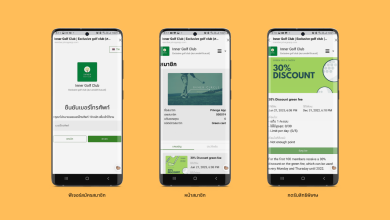Intrusive marketing methods such as cold calling and direct mail have become ineffective over time. As consumers, we simply don’t want to be interrupted by ads anymore when we’re engaging in different activities both online and offline. As a result, marketing’s focus has shifted to strategies such as permission-based email marketing, content marketing, and SEO. This transition is a result of a more empowered consumer. People want to be able to find solutions to their problems, research products, and make informed decisions at their own pace. And that’s what makes inbound marketing so effective. It is a method which focuses on getting found by customers. According to Wikipedia, inbound marketing is a technique for drawing potential customers to products and services via the internet. A lot of companies often interpret this as improving their search engine optimization to attract incoming customers. This can be a start, but there are other ways to attract potential customers through your inbound marketing campaign. A recent search also brought up a detailed article on inbound marketing where there are many additional resources.
Definition of Inbound Marketing
Inbound Marketing – Inbound marketing is a new marketing strategy which replaced the old traditional outbound marketing strategy. The difference between the two is that inbound marketing focuses on trying to figure out where the audience is, and then designs the marketing strategy to lead customers to the business/website. Outbound marketing relies on advertising the product through various media outlets to anyone in the general public. Inbound marketing is definitely a more effective strategy on spending to get customers because the marketer can determine what type of customer they want to attract and can save money doing so by not advertising to others. The less spent on advertising to those who are uninterested means more funds to focus on the potential customers. SEO is a huge part of inbound marketing because it essentially means effectively changing the ranking of outbound links so that the customer search results will lead to the product without the customer directly clicking on an advertisement. This is only one of many strategies of inbound marketing in which SEO service has a large impact.
Importance of SEO for Businesses
SEO can pen direct sales or lead. With its inexpensive cost, you can imagine the profits you can get. SEO can also work as a nonstop promotion. Your site will keep promoting your product 24/7, without you having to bother update it every time. And with an increase in visitors, automatically it will increase your brand credibility.
Still on the same point, SEO really hits your target market. When your site is listed on the top page of search engine, you will get a lot of visitors who are really interested with the products you offer. They are the same people who use a search engine to look for your product. And if you can provide what they need, there’s a very big chance that they will become your loyal customers.
So, does your business really need to apply SEO? First thing first, SEO is inexpensive. Compared to buying tons of banner ads, spending money for outbound marketing, or using PPC and AdWords, SEO can make your business stronger with only a small amount of capital.
Without a proper marketing strategy, your business is doomed to fail. And since everyone’s hunting ground has already moved from the traditional marketplace to that one known as the World Wide Web, we no longer have an excuse to not make our business stronger. Now we know inbound marketing can be very powerful in increasing your business strength, but we should also never underestimate the power of SEO to further increase that strength.
Benefits of Inbound Marketing for SEO Success
Inbound marketing has numerous advantages, particularly in the realm of search engine optimization (SEO). By matching certain types of content with particular queries, search engines are better able to serve up the right answer to their users. This is accomplished through indexing content based on a wide variety of factors and serving up the content that best matches a particular query. Inbound marketing is effective in this model as it enables companies to essentially sidestep the traditional role of advertising in the aforementioned value superiority escalation. If great content is available and easily accessible, the right customers will find their way to it and it will serve to enhance the company’s brand even if a purchase is never made. In terms of SEO, this will mean that the right customers will be more likely to find a company’s content as it will be the content that best serves their needs, thus increasing organic search engine traffic.
Increased Organic Traffic
Chitika found that the top-ranking spot received approximately 33% of traffic on average. The rate progressively declines with the 2nd and 3rd spots receiving 18% and 11% respectively. The findings continually drop with the final page of the results having an average click-through rate of less than 1%. The study supports the idea of the value of the first page and top placement rankings. On average, the first page of Google receives 95% of web traffic, with subsequent pages receiving 5% or less of total traffic.
The strategy is straightforward. The higher your site ranks in the search engine results, the more traffic your site is going to receive. Recent research by the Chitika insights study on the value of Google results positioning revealed some astonishing data on the average traffic for the top-ranking spot. The results are based on an 8-week study on the click-through rate from Google search results.
The ultimate goal of most online businesses is to increase web traffic and consequently conversions. Most entrepreneurs and marketers are constantly in search of the best marketing strategy. And here’s some good news for SEOs and internet marketers. One of the easiest ways to increase web traffic is to bolster your site’s organic search visibility, according to a new study by “The State of SEO.” In fact, 49 percent of all respondents agree that one of the greatest benefits of increasing your search engine optimization efforts is to increase your web traffic. Considering the fact that SEO is a relatively low-cost strategy with high potential return, there’s no better time than now to increase your site’s organic search visibility.
Higher Search Engine Rankings
Consistently putting out quality content is the best way to make friends with Google. Google’s number one priority is to provide its users with the best possible content for their search. When Google sees you are pushing out relevant content on a consistent basis, it will give you a better chance at ranking higher on search engines. In addition to this, the more indexed pages you have, the better. An example would be a 100-page website going up against a 10-page website. The 100-page website has more chances for its content to be found on search engines. The goal is to have each of your pages and blog posts be a new entryway from which a visitor can find your site. This accumulates in more organic traffic to your site.
A major benefit of inbound marketing is how it improves search engine rankings. There are a variety of ways it accomplishes this.
Improved User Experience
There are many reasons that people should integrate inbound marketing strategy into their SEO campaigns. Below we have detailed why increasing user experience is a good idea and how search engine optimization is linked to this objective. As well, we will take a look at the ways inbound marketing aids a business in offering a better user experience to not only visitors referred from search engines, but all visitors who find the site. User experience is important to all businesses as it is a measure of how worthwhile or meaningful interactions are with a human-computer interface. It is a major component to a search engine seemingly becoming more biased towards delivering the highest quality sites to its users. This is seen through the Algorithm Change Focus on Site Quality launched by Google in 2011, one of the changes to search engine algorithms that the researchers were able to observe directly. Measures of user interaction satisfaction were only limitedly reported in the findings, but it is implied through the definition of user experience and the fact that sites often need high-quality content/structure to satisfy the user. It is no secret that search engines lower the rankings of sites that do not meet quality thresholds. Considering these points, no one can deny the importance of user experience and the role it plays with search engine traffic and the credibility of a website.
Strategies for Effective Inbound Marketing
Once content is created, keyword optimization is key. This is the most important aspect in order to achieve search engine visibility. Keywords should be selected based on terms which a business’s target market might use when searching online and should be relevant to the business’s website. Google’s Keyword Tool is a free and easy way to identify keywords, though there are many paid services which offer more advanced features. Once keywords are chosen and implemented, it is important to monitor rankings and make adjustments as needed. Note that it is unrealistic to expect high rankings for every keyword, so it is important to focus on the most important terms first and then add more over time.
In order to succeed in inbound marketing, businesses must pay close attention to content creation and optimization. First, it is important to create a strong online presence. This is best achieved by creating high-quality content for websites. This content needs to be relevant and updated regularly. To keep content fresh, many website owners utilize a blog format. Blogs are ideal for search engine optimization (SEO) and inbound marketing.
Content Creation and Optimization
The final step to content optimization is to use rich snippets. Rich snippets are tags that you add to your website coding, which will add a visual layer over the data on your website. This visual layer will enrich the data by adding images, ratings, pricing, etc. to give the viewer a better understanding of your content before they click through to your page. This is done by rich snippet marking up your software with itemscope and itemtype. After you have properly applied some data markup to the HTML of your website, you can use Google’s structured data testing tool to preview rich snippets of your site and ensure there are no errors in the marking up of your site. Adding a visual layer to your content will, in turn, lead to higher click-through rates and lower bounce rates.
Optimization of content is all about positioning your “money” keywords in the right positions and using them the right number of times without getting your content tagged as spam. This is very easy to do for your core service pages but can be quite difficult with content such as blog posts and articles. With the core service pages, you likely know what you are trying to target for these pages, and it is a matter of placing them in the right positions and the right number of times. With articles and blog posts, you may have a few target keywords that you would like this article to rank for, but you don’t want to harm the quality of your writing by placing the keywords too many times. An excellent method to keep track of your keyword usage and density is to use an SEO tool plugin such as this SEO plugin for WordPress. This tool will allow you to see and manipulate the title and META description that will show up in the search engines’ results. These, in fact, play a large role in your click-through rate and should be very descriptive and include a call to action.
First-rate content is the key to successful inbound marketing and the subsequent enhancement of your search engine optimization. With every new algorithm produced, the search engines are getting smarter in measurement of when results are relevant to the terms searched. It is essential to create content that is informative, engaging, and adds value to the reader. This content should be updated frequently to keep your site fresh in the eyes of the search engines. Your site’s content needs depth and breadth. Creating a resource center can help in achieving this. This is a section of your site where you host all of your informative content that you think will add value to your site visitors. This will not only add value to your site visitors but also increase your likelihood of getting inbound links. This resource center will play a critical role in how your on-page content is interlinked. Each resource article should be linked with some of your service or product-related content.
Social Media Engagement
It is important for companies to make obtain their presence on sundry different communal media networks as opposed to concentrating on one or two categorical platforms. Users can gravitate among platforms, and it has become common for a consumer’s acquaintances or relatives to be a part of brand-strengthening discussions. Then the customer will wander to acquire that the marketer doesn’t have the same answer, which can construct a refusal perspective on the company. Unfortunately, this can take days to he.
This concept has established a new era of communication betwixt businesses and potential customers: everywhere the regulars are spontaneously obtainable to provide response, their understanding, and asking queries alike broadcast. No advanced is there a need to register a focus group or conjecture to obtain a consumer’s view. Through the route of social media marketing, clients can have a truthful and clear intuition. Coming to light: the best time to involve the customers is a phrase that they find highly pleasing. Social media is a successful method to engage customers at their best and worst.
Prior to the serious upsurge of social media marketing, businesses were conversing their commodities and amenities at customers relatively than communicating in a two-way discussion to get cherished insight. This old technique command not be very of a pull for the outcome that the individual would be hard pressed to locate dignitary who would be fervent about being distributed to over a production or amenities.
Email Marketing Campaigns
A highly effective inbound marketing tactic is email marketing. The method of using emails to generate traffic to a website has been very successful in the past and it is still relevant today. Email marketing can have many uses. It can be used to distribute content, promote events and offers, drive traffic to a particular part of a website, or keep in touch with customers or subscribers to your site. It can generate inbound links too, to help with SEO. This is something often overlooked, but its potential in helping with SEO is massive. Email marketing can be both a retention-focused strategy and a strategy to reach new customers. Retention email can keep customers informed and involved with your company, thus increasing customer lifetime value. Acquisition-focused email seeks to drive more customers to your site, usually through generating traffic to a particular page through an offer of some kind. Email marketing can increase page views and sessions, can lower bounce rates, and can also directly increase sales and inquiries, thus meeting many of the KPIs for SEO. Email marketing, when done correctly, can be an inexpensive and very effective form of marketing.
Conversion Rate Optimization
By understanding what drives customers, hypotheses can be made about what changes to the site will have a positive effect on customer behavior. An educated guess or prediction is made of the outcome of a test or changes, something similar to the previously discussed PPC advertising model. This will give directional guidance on what should be done to the site: why spend time and money on a radical change on the website if there is no evidence suggesting it will have a positive impact? It is essentially an attempt to reduce risk in site change.
Statements and theories about your customer can be recorded and displayed using hypotheses, something that is usually done from understanding the customer but likely to be done throughout the entire CRO process from now on.
To understand the customer, market research is required to avoid assumptions in your customers’ needs. This research will provide you with an understanding of your customer behavior and can be conducted using various methods such as surveys, getting feedback on your website, and through observing how customers interact with your site.
By greater understanding the customer, their motivations and concerns, it is possible to provide them with an improved experience on your website, and studies have shown that increasing customer satisfaction has the potential to increase conversion rate.
Conversion rate optimization is the process of optimizing your website to a higher conversion rate. In order to achieve this, you must become proficient in defining the value of your conversion, understanding your customers in order to make a sale effective, and the factors that will influence the customer during the buying process.
Small businesses sometimes struggle with the tactics of the larger enterprise companies. For example, an Enterprise B2B software company with a $2M a year SEO budget can engage in all sorts of link bait and have a great ROI. A local off-line business generally doesn’t have anything link worthy. They may have to employ heavy on page tactics and focus on their local SEO market. But this does not mean inbound tactics aren’t scalable. Even if a local plumber cannot afford to engage in a high budget SEO campaign, the link earning tactics can still be very effective. My favorite example of this is a case study from David Mihm. He describes the cost effectiveness of local link building in local directories. This can easily be accomplished via an inbound mindset with only a small dedicated portion of an off-line business’s time and is a more sustainable tactic than traditional directory submissions.
PR and press are still an important way to gain exposure for a company. However, Web 2.0 techniques have changed the way consumers and businesses seeking products/information from PR interact with it. Online press should be optimized and social media press releases, and news search are all effective ways to get visibility for an announcement. Press should also lead to some sort of evergreen content that lives on the website as press links alone are not very high quality and fade over time. This tactic can be very productive as new search and social media have made it so that content can now take off and gain visibility months or even years after it was published.
The world of SEO has changed significantly over the past decade. One thing that has remained the same is that gaining high quality links is the most important tactic towards gaining placement in the organic search results. However, the tactics to gain those links have changed as the search engines are looking for higher quality links. Directory links and link exchanges are no longer effective. The search engines want to reward relevant and useful links. This requires an inbound marketing mindset to the link building process.





